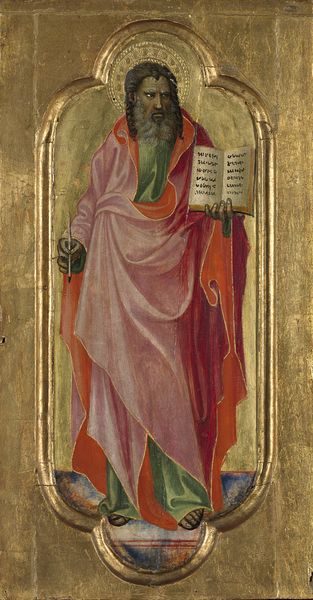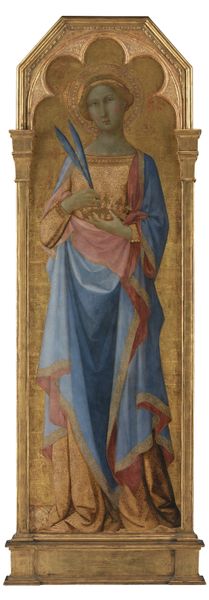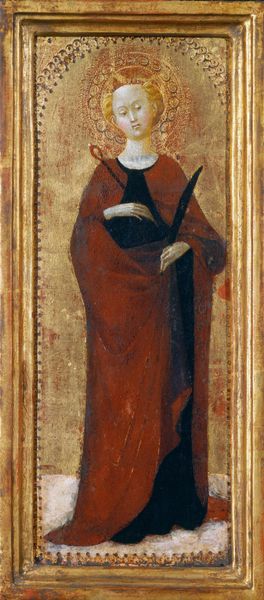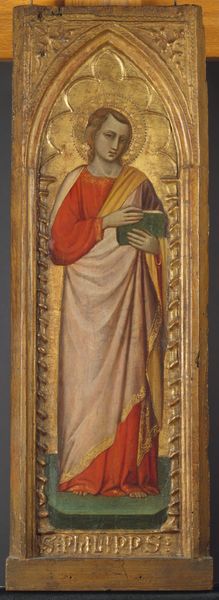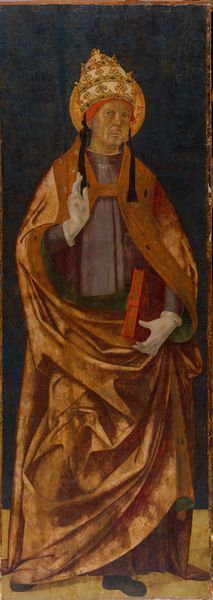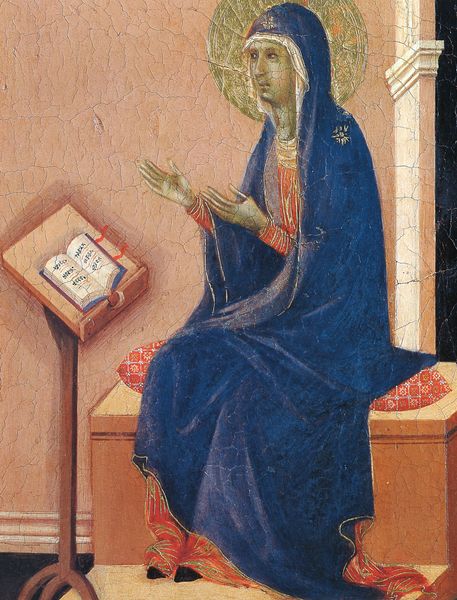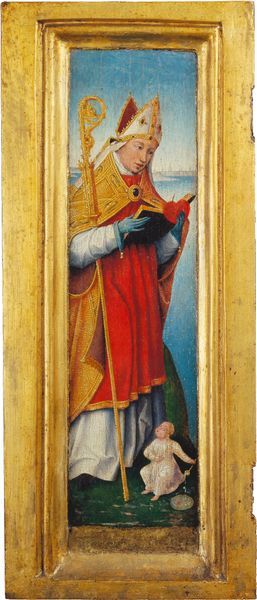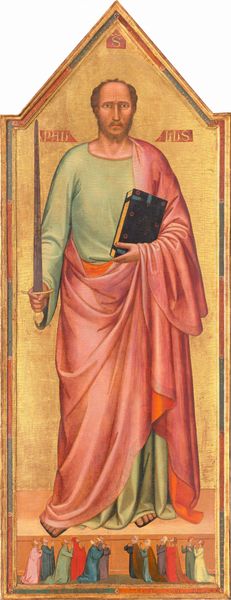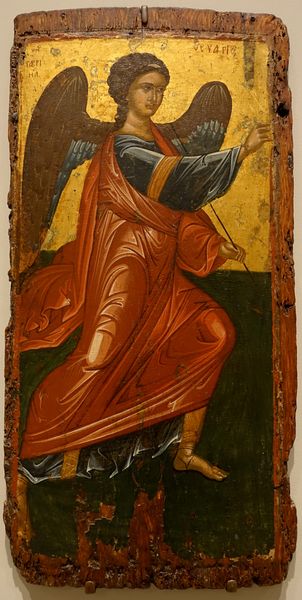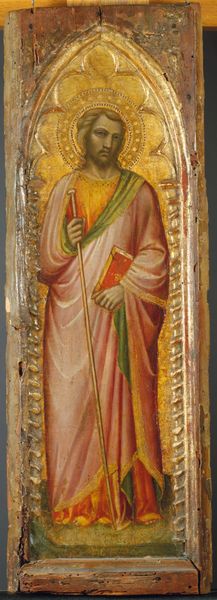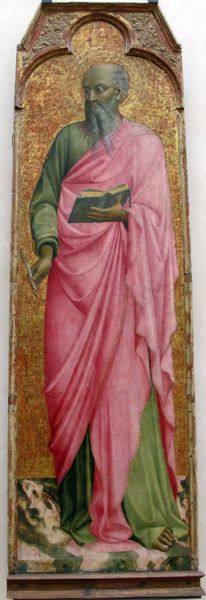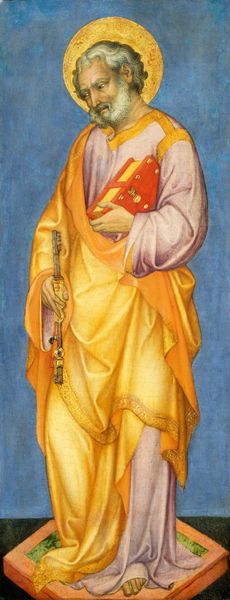
tempera, painting
#
portrait
#
medieval
#
tempera
#
painting
#
figuration
#
international-gothic
Dimensions: height 35 cm, width 14 cm
Copyright: Rijks Museum: Open Domain
Curator: Gherardo Starnina painted this panel, titled “Two Evangelists,” around 1407. Editor: The surface is richly textured with what looks like gold leaf, yet somehow restrained in color. It possesses a gravity befitting a religious subject, almost somber. Curator: Starnina employed tempera paint to achieve this effect, layering pigments painstakingly to create subtle gradations and luminous highlights on the garments. Considering the cultural significance of religious iconography in the 15th century, can you consider its social function within the church and beyond? Editor: Absolutely. During the International Gothic period, art was deeply intertwined with religious institutions, not only serving a didactic purpose—to illustrate biblical stories for the largely illiterate populace—but also reinforcing the Church’s authority and wealth. Paintings like this adorned altars, serving as focal points for devotion and symbols of divine power. How do you think this piece challenges art and craft boundaries? Curator: Tempera technique was considered part of artisanal tradition, closer to craft. It was valued for durability and luminosity rather than expressive brushwork. However, the subject here takes us towards “high art”. It presents the intellectual authority figures. These images of the Evangelists elevated the craft by associating skilled craftsmanship with spiritual content sanctioned by powerful patrons and cultural forces, effectively blurring the boundaries. What lasting impression does this piece leave on you? Editor: Beyond its historical importance and material crafting, I find the figure's penetrating gaze, paired with the golden background, creates an enduring sense of reverence and scholarly authority. Curator: I agree. Considering both the materials employed and the social role played by works like this, we gain a more holistic appreciation for their continued relevance.
Comments
rijksmuseum about 2 years ago
⋮
Starnina was a widely travelled artist who developed an elegant and highly coloured style in Spain. After he returned to Florence in 1403, his work exerted a profound influence on the artistic development of Lorenzo Monaco and other Florentine painters. These two panels, which are in excellent condition, probably served as wings of a large altarpiece.
Join the conversation
Join millions of artists and users on Artera today and experience the ultimate creative platform.
